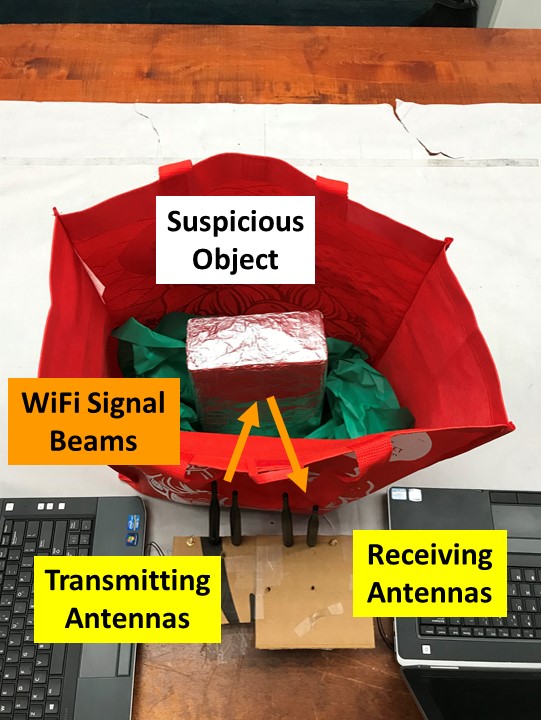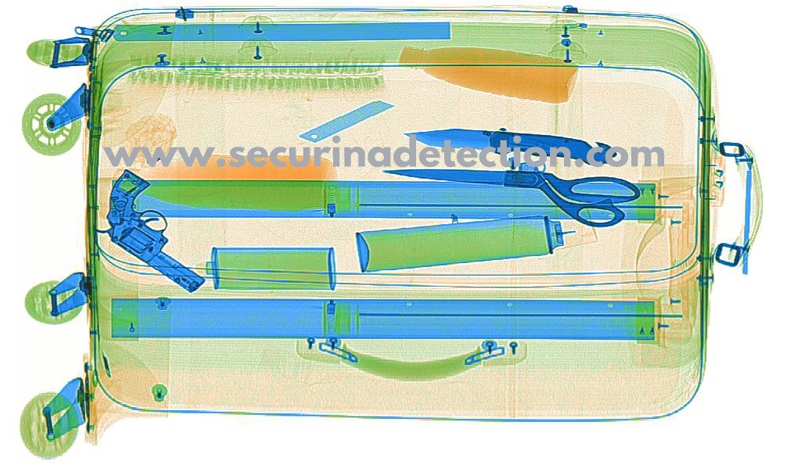New technology: Wifi signal can detect weapons hidden in bags?
Original news from [Breaking news] by Claus Hetting | April 21, 2019
By Martynas Tovarovas, Wi-Fi NOW Staff Writer.
New research suggests Wi-Fi signals can be used to identify dangerous objects such as weapons, bombs, or chemicals. The new technology penetrates luggage and detect suspicious materials without physically opening bags or violating privacy, say researchers from Rutgers University in New Jersey, USA. They believe their new Wi-Fi-based system is a way speed up security checks and keep security costs at a minimum.
Security checks have become a part of our daily lives. Whether it happens at an airport or a museum, everyone is subject to X-ray scans or pat-downs for potentially dangerous items. Still X-ray machines and airport body scanners are bulky and expensive, which limits their deployment.
To make the process less intrusive and to lower future security check costs dramatically, Rutgers University has developed technology that may eventually allow scanning to happen simply by using commodity Wi-Fi devices. The basic idea is to detect and analyse the wireless reflection, absorption, and refraction patterns caused by materials packed in bags and luggage.
Most dangerous items are composed of metals or liquids, which create measurable attenuation and scattering of Wi-Fi signals. Non-dangerous objects and baggage are usually made of fibre, plastic or paper, through which wireless signals can more easily pass unperturbed.

All the Wi-Fi-based detection system requires in terms of hardware is a couple of antennas and a computer, says Jennifer Chen, Professor at Rutgers University. People could simply file past the transmitting stations and if something suspicious is detected, an alert would pop up on the computer.
“Our current system is implemented on a pair of laptops with 2 to 3 antennas, which could be deployed at the entrance gates of a large number of public places to inspect people’s baggage non-intrusively, such as museums, theme parks, schools, stadiums, and or scenic locations. Deploying the system on hand-held devices is the next step of our work,” says Jennifer Chen.
Machine learning software is used to distinguish dangerous objects from those that are harmless and estimate the level of risk. For example: A metal object is deemed more dangerous if detected in the shape of a weapon, while a liquid object is less risky if its volume is within permitted bounds.
Experiments with 15 types of objects and six types of bags demonstrated impressive detection accuracy rates of 99% for dangerous objects, 98% for metal, and 95% for liquid. For typical backpacks the accuracy rate exceeded 95% and dropped to about 90% when objects inside bags were wrapped.
As of right now the Rutgers University Wi-Fi-based detection system requires people to place the bags in a certain area and stand back, since the presence of human limbs and movement interfere with accuracy. The next step is to evolve the system so as to reduce such sources of error and allow non-intrusive inspection of bags worn on bodies, researchers say.
The full Rutgers University research paper can be found here.
/Martynas.
If this technology can be used in real situations and available, the inevitable security screening industry will meet the challenges of the new technology revolution. At the same time, I hope that this won't like the fake explosive detection event (ADE 651) ,will not be repeated again.
Tags: security equipments, security x-ray screening system, security inspection and detection system, walkthrough metal detectors, handheld metal detectors, under vehicle inspection system, explosive detectors, food metal detectors, ground search detectors.
